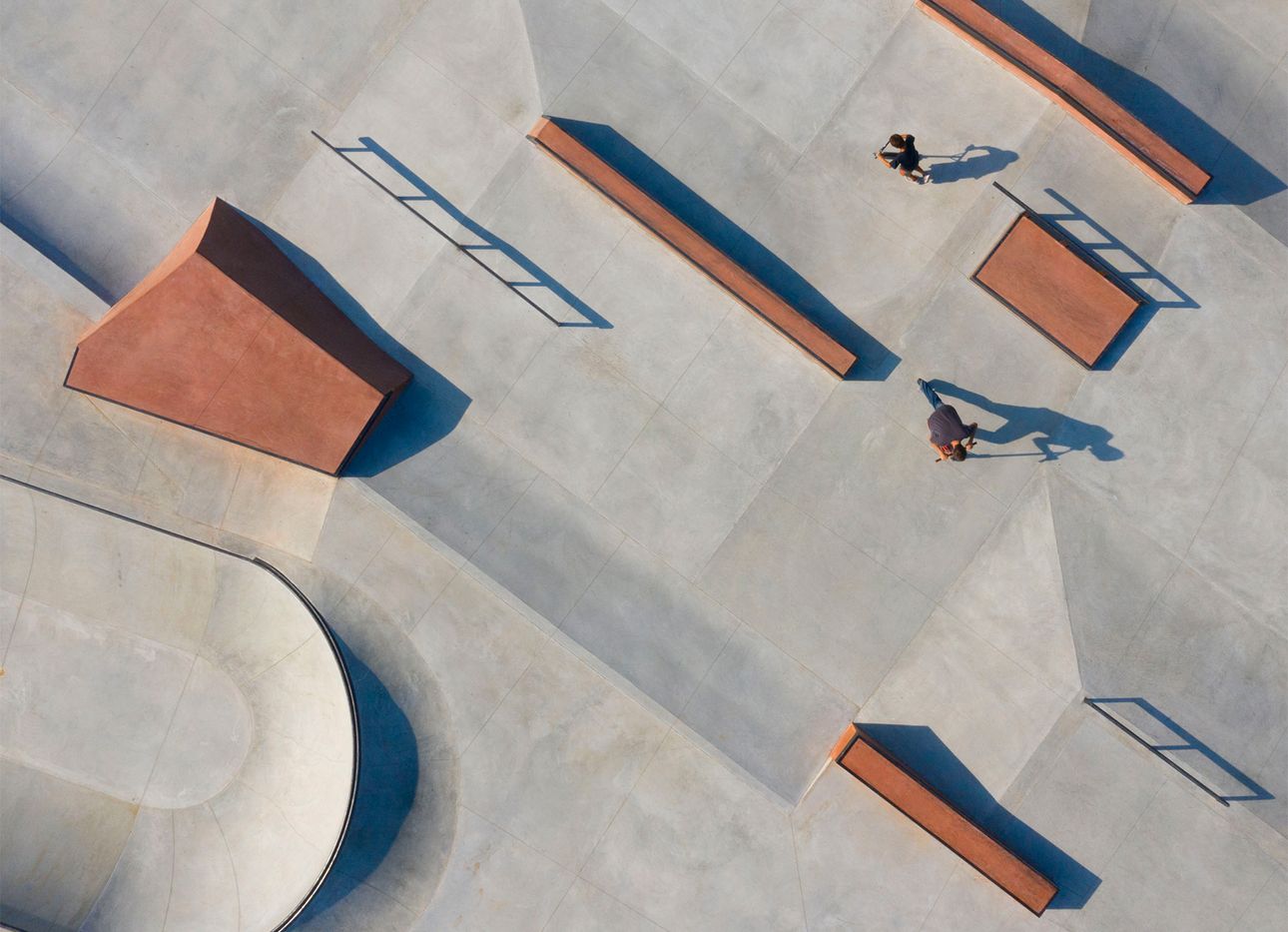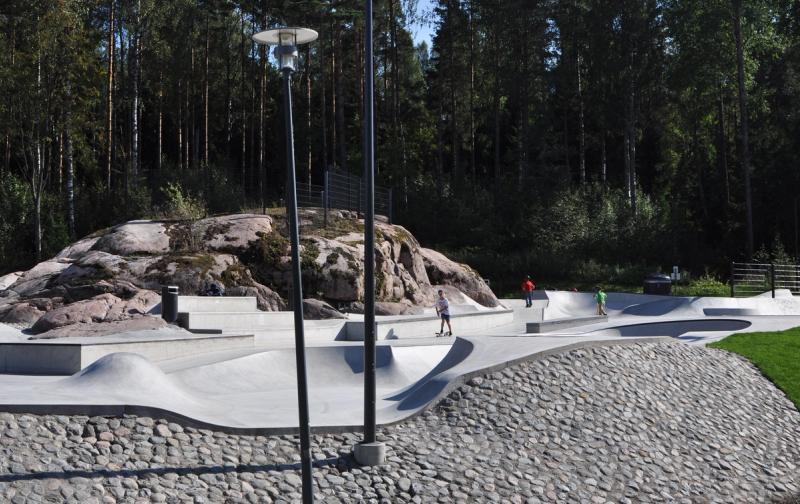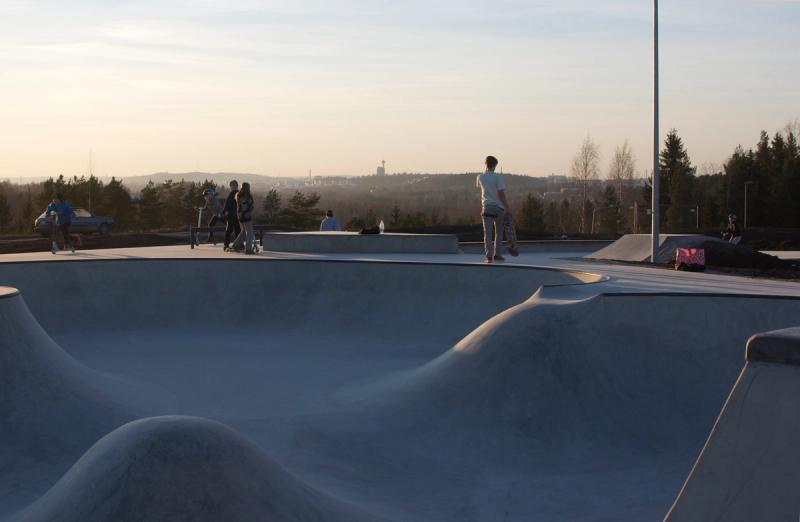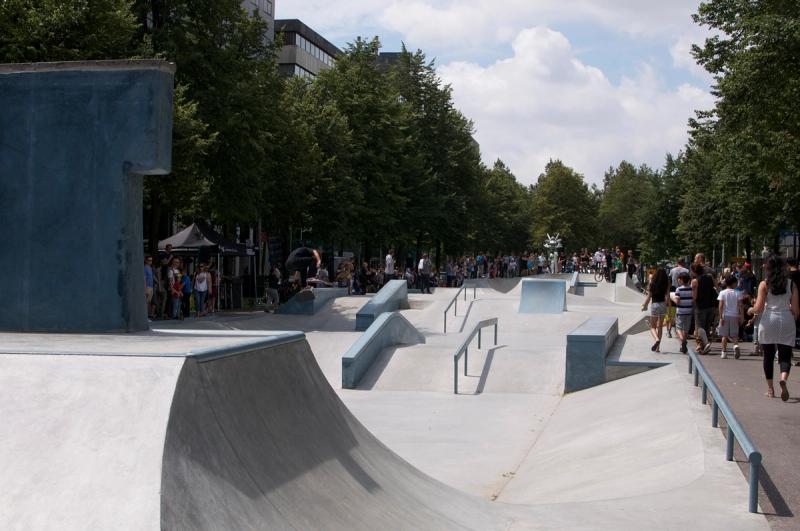
Janne Saario Subtly Integrates Skate Parks Into Landscapes and Cities
For Janne Saario, a former professional skateboarder turned skate park designer, the best skate parks exist in harmony with their landscapes, streetscapes, and communities. “It's always a new story in every project,” he says.
Raised in the Helsinki suburb of Torpparinmäki, Saario began skating at age 6 and got his first pro sponsorship deal as a teenager, joining Element skateboards’ European team. While touring in cities such as Athens and Paris, he became fascinated by design, visiting those cities’ historic landmarks like The Acropolis and the Bibliothèque Nationale de France, kindling a lifelong interest in architecture. By the mid-2000s, he began designing himself—by creating skate parks. “At that time in Europe,” he says, “skate parks were pretty much just these modular ramps and obstacles on a flat ground, copied and pasted to different locations.”
Saario’s designs were ambitious and site-specific from the start. Take 2008’s Micropolis, which is seamlessly integrated with a Helsinki city park, preserving native trees as part of its design and including swoopy, curving, swimming pool–like concrete forms and red brick straightaway pathways. In the 2010s, he gained momentum with designs such as Rotterdam’s Westblaak skate park (2016), which features integrated walkable paths straight through its sculptural concrete landscape. Says Saario: “I’m excited by opportunities to do skate parks in central city locations, so it becomes this hybrid of a public space and sport facility—and a kind of civic theater.”
In 2019, Saario saw his first design completed in the United States: the updated Jolie Crider Memorial Skatepark in Columbus, Indiana, a small city known as a mecca of modernist architecture, with buildings by Finnish-American architects Eliel and Eero Saarinen—a fact that helped lead to Saario’s skate park commission.
“Janne's design created a simple, beautiful, well-designed space for people to meet and find like-minded friends,” says Jonathan Nesci, the renowned Columbus-based furniture and lighting designer who commissioned Saario. “The park is busy with creative energy every day. I believe the attention this skatepark produced spawned a renaissance of skateparks in the region. Janne's program for the park was developed around the information garnered from three community input sessions, which he masterfully assembled into a Saarinen-Noguchi-esque landscape.”
Saario, who also teaches landscape architecture at Helsinki’s Alvar Aalto University, says he likes concrete not for its industrial or utilitarian possibilities—cheaply shaping any form—but because it can still show a human touch. As with the act of skateboarding, working with concrete is highly tactile. “A lot of my work, there’s this hand-polished quality,” he says. “I think that’s when you see concrete in its most beautiful form in skate parks, because there's so much handwork from the guys who are living the form as skaters themselves.” That’s another thing that makes skate parks special works of design: Their users often serve as volunteer park builders. It becomes a community design effort.
In recent months, Saario has been designing a new skate park on the remote French island of Réunion, near Madagascar, as well as another park in Brussels, in collaboration with the Paris-based landscape architecture firm Les Marneurs, that’s part of a recycling center complex. A handful of new parks in Finland are also in the works. “The ultimate skate park is yet to be,” Saario says. “The ultimate project is still waiting.”




